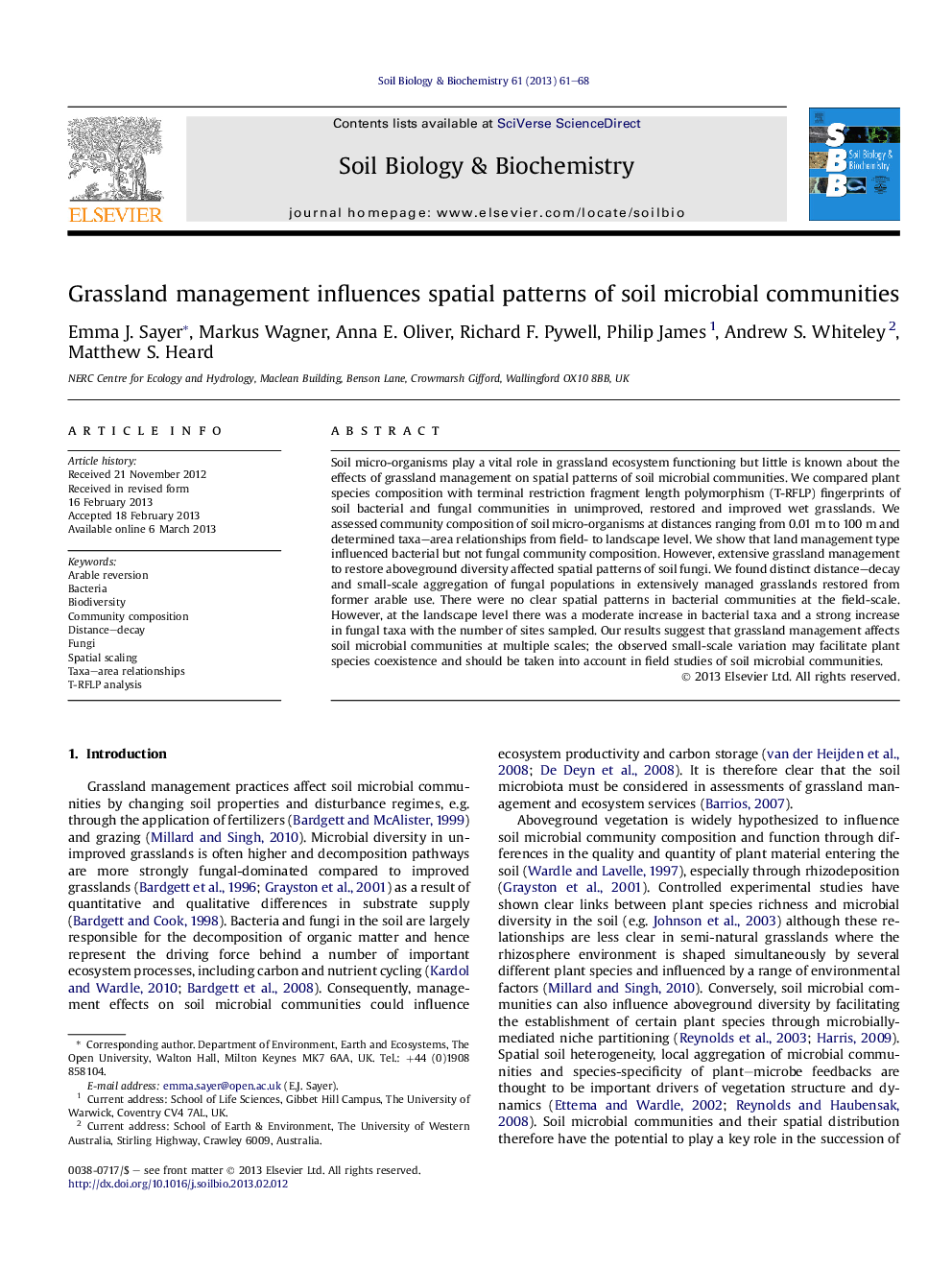| Article ID | Journal | Published Year | Pages | File Type |
|---|---|---|---|---|
| 2024790 | Soil Biology and Biochemistry | 2013 | 8 Pages |
Soil micro-organisms play a vital role in grassland ecosystem functioning but little is known about the effects of grassland management on spatial patterns of soil microbial communities. We compared plant species composition with terminal restriction fragment length polymorphism (T-RFLP) fingerprints of soil bacterial and fungal communities in unimproved, restored and improved wet grasslands. We assessed community composition of soil micro-organisms at distances ranging from 0.01 m to 100 m and determined taxa–area relationships from field- to landscape level. We show that land management type influenced bacterial but not fungal community composition. However, extensive grassland management to restore aboveground diversity affected spatial patterns of soil fungi. We found distinct distance–decay and small-scale aggregation of fungal populations in extensively managed grasslands restored from former arable use. There were no clear spatial patterns in bacterial communities at the field-scale. However, at the landscape level there was a moderate increase in bacterial taxa and a strong increase in fungal taxa with the number of sites sampled. Our results suggest that grassland management affects soil microbial communities at multiple scales; the observed small-scale variation may facilitate plant species coexistence and should be taken into account in field studies of soil microbial communities.
► Grassland management affected community composition of soil bacteria but not fungi. ► Soil fungal communities showed distinct spatial patterns in restored grasslands. ► Soil bacterial and fungal richness increased with number of fields sampled. ► Small-scale aggregation of soil fungi may facilitate plant species coexistence. ► Grassland management affects soil microbial communities at different scales.
